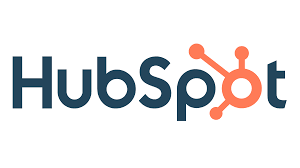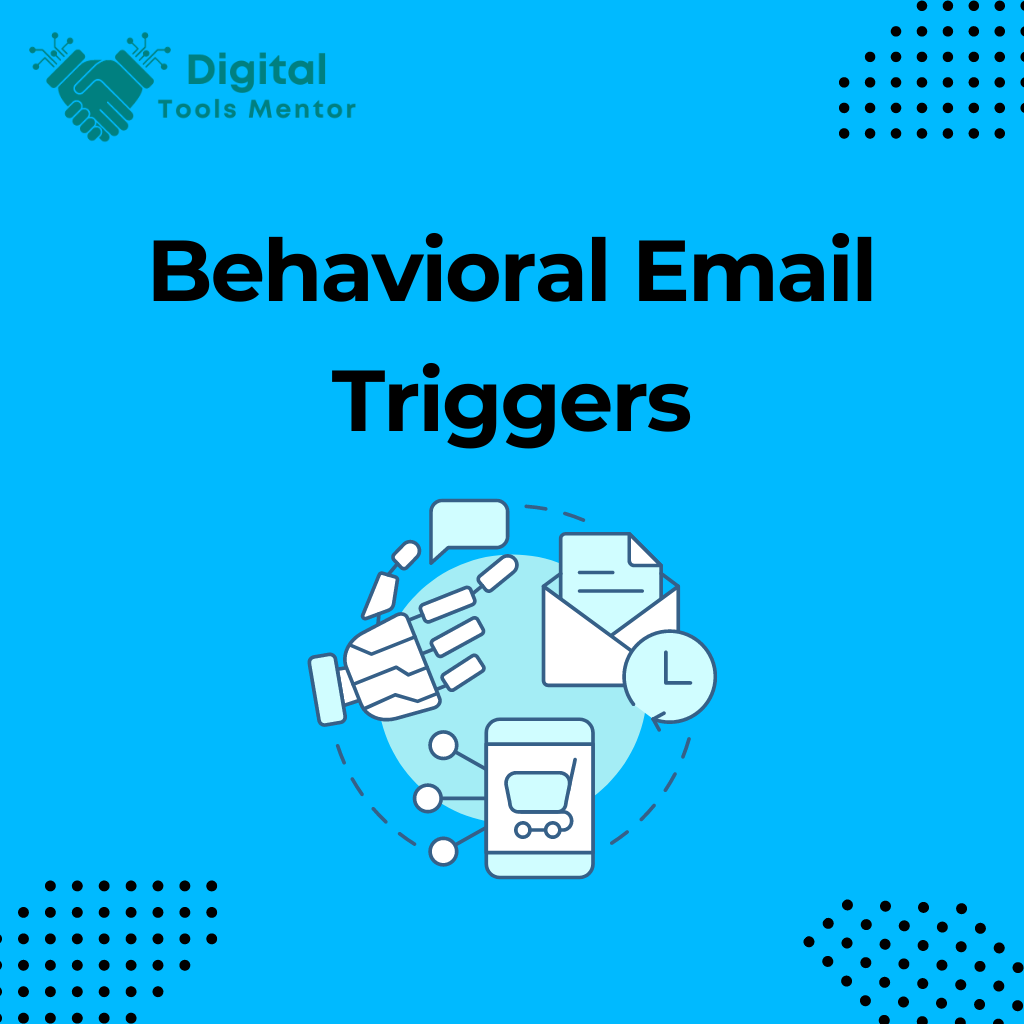Mastering Behavioral Email Triggers: Boost Your Marketing Campaigns
In the realm of digital marketing, behavioral email triggers stand out as a powerful tool designed to enhance interaction with customers by responding to their specific actions and behaviors. These triggers are automated emails that are sent based on predetermined activities performed by users, such as visiting a webpage, abandoning a shopping cart, or making a purchase. The idea is to react in real-time or near real-time to engage customers with highly relevant content tailored to their actions.
The importance of behavioral email triggers in modern marketing strategies cannot be overstated. They allow businesses to deliver personalized experiences that resonate more deeply with individual customers. This personalization leads to higher engagement rates, increased customer satisfaction, and ultimately, boosted sales figures. By automating these responses, companies ensure timely and appropriate communication, which helps in maintaining a continuous and meaningful dialogue with their customers.
Furthermore, behavioral email triggers help in segmenting audiences based on their interactions, which enables marketers to refine their strategies and target users with precision. This targeted approach not only enhances the efficiency of marketing campaigns but also significantly improves the return on investment (ROI) by minimizing wasted resources on less interested parties. In a digital landscape where customer attention is fleeting, behavioral email triggers are essential for capturing interest at critical moments, thereby fostering stronger customer relationships and driving business growth.
Understanding User Behavior
To effectively implement behavioral email triggers, a thorough understanding of user behavior is essential. This involves tracking and analyzing how users interact with your website, emails, and other digital touchpoints. Here’s how this process unfolds and why it’s crucial for setting up effective triggers.
Tracking User Behavior: User behavior is typically tracked using various analytics tools that collect data on user activities and interactions. These might include:
- Web Analytics Tools: Platforms like Google Analytics track page visits, session duration, and user navigation paths.
- Email Analytics: Tools integrated into email marketing software can monitor open rates, click-through rates, and interaction times.
- Heatmaps and Session Recordings: These tools provide visual representations of where users click, scroll, and spend time on your website.
- Customer Relationship Management (CRM) Systems: These collect and organize detailed information about customer interactions and purchases.
Each piece of data gathered from these tools provides insights into what users are interested in and how they prefer to engage with online content.
Analyzing User Behavior: The collected data needs to be analyzed to identify patterns and trends that can inform the creation of effective email triggers. For example, if data shows that many users abandon their shopping cart on a specific page, an email trigger can be set up to address this behavior, perhaps by sending a reminder or offering a discount.
Importance of Data Collection: Effective data collection is paramount because it lays the foundation for any targeted marketing strategy. The quality and granularity of data collected directly influence the precision with which marketers can craft their messages and triggers. For instance:
- Personalized Content: Detailed behavioral data allows marketers to send personalized emails that resonate with the individual’s current needs and preferences, significantly enhancing engagement.
- Timely Interactions: By understanding user behavior patterns, marketers can time their emails to coincide with when a user is most likely to be receptive.
- Segmentation: Behavioral data facilitates advanced segmentation, enabling marketers to group users by similar behaviors and tailor campaigns specifically to each segment.
In conclusion, the ability to track and analyze user behavior accurately is not just about gathering data; it’s about deriving actionable insights that can drive the setup of effective behavioral email triggers. This strategic approach ensures that marketing efforts are not only relevant but also timely, personalized, and more likely to result in positive customer actions.
Types of Behavioral Triggers
Behavioral email triggers are essential tools that respond dynamically to specific actions taken by users. By understanding and utilizing these triggers effectively, marketers can significantly enhance the impact of their campaigns. Here are some common types of behavioral triggers, each designed to engage customers at critical moments in their journey:
- Cart Abandonment Triggers:
- These are emails sent to users who add items to their shopping cart but leave the site without completing the purchase. The emails might remind them of their cart contents, offer a limited-time discount, or ask if they encountered any issues during the checkout process.
- Page Visits Triggers:
- Triggered by visits to specific pages, such as product pages or promotional content, these emails follow up with additional information, related products, or exclusive offers related to the pages visited to encourage further engagement or purchase.
- Purchase History Triggers:
- Based on past purchases, these emails cater to the customer’s preferences and buying patterns. They may include product recommendations, replenishment reminders (for consumable products), or exclusive offers on related items.
- Signup Welcome Triggers:
- Sent immediately after a user signs up for a newsletter, service, or account, these welcome emails typically introduce the brand, provide useful links, and often include a first-purchase discount to incentivize immediate action.
- Engagement Triggers:
- These are designed to re-engage users who have not interacted with the website or emails for a set period. Messages might include updates about new features, products, or special offers to reignite interest.
- Milestone Triggers:
- Celebrating user milestones such as account anniversaries, significant purchases, or loyalty achievements, these emails foster a personal connection and often include rewards or recognition.
- Event-Based Triggers:
- Linked to specific dates or events, such as holidays or the user’s birthday, these triggers deliver timely content or offers that capitalize on the event’s relevance to the user.
- Feedback Request Triggers:
- Sent after a purchase or interaction, these emails ask customers for feedback on their experience. This not only provides valuable insights but also shows customers that their opinions are valued.
- Behavior-Based Replenishment Triggers:
- For products that are regularly used and need replenishing, these emails remind customers to reorder. The timing is based on the expected product usage cycle.
- Upsell and Cross-Sell Triggers:
- These emails offer complementary or premium products based on the user’s purchase history. The goal is to increase the order value and enhance customer satisfaction by providing additional options that meet user needs.
Each of these triggers plays a specific role in a comprehensive email marketing strategy, allowing businesses to communicate effectively with users at different stages of the customer lifecycle. By leveraging these behavioral cues, marketers can create more personalized, timely, and relevant email campaigns that drive engagement and sales.
Explore 23 Best Email Marketing Platforms in 2025
Setting Up Behavioral Triggers
Implementing behavioral triggers in your email marketing campaigns involves both technical setup within your email platform and integration with other tools like website analytics. Here’s a guide to help you set up these triggers effectively, along with tips for ensuring seamless integration.
Technical Setup in Email Marketing Platforms:
- Choose Your Email Marketing Platform:
- Select a platform that supports advanced automation and behavioral triggers, such as Klaviyo, Mailchimp, or HubSpot. These platforms offer user-friendly interfaces for setting up automated workflows based on specific user behaviors.
- Define Your Triggers:
- Determine which user actions will trigger an email. Common triggers include cart abandonment, page visits, or completing a purchase. Each trigger should align with a specific goal, such as increasing sales, boosting engagement, or enhancing customer loyalty.
- Create Email Templates:
- Design email templates for each trigger. Ensure that these templates are personalized and relevant to the behavior that is triggering them. For instance, a cart abandonment email should include the items left in the cart and possibly a call to action like a discount or free shipping offer to complete the purchase.
- Set Up Automation Workflows:
- In your email platform, set up the automation workflows. This typically involves specifying the behavior that triggers the email, designing the email content, and setting any conditions or delays (e.g., send a cart abandonment email 24 hours after abandonment).
- Test Your Triggers:
- Before going live, thoroughly test each trigger to ensure emails are sent correctly and the content displays as intended. This might involve setting up test accounts and simulating various behaviors.
Integrating with Website Analytics Tools:
- Link Email Platform with Analytics Tools:
- Use integrations or APIs to connect your email marketing platform with your website analytics tools, such as Google Analytics. This linkage is crucial for tracking user behaviors accurately across your website and emails.
- Track User Behavior:
- Set up tracking on your website to monitor user actions that will trigger emails. This could involve tracking page visits, button clicks, or form submissions. Ensure that your analytics tool is capturing all relevant data points needed to trigger emails.
- Use Tags and Segments:
- Utilize tagging in your analytics tool to segment users based on their behavior. This allows for more targeted and personalized email campaigns. For example, users who visited high-value product pages might receive different emails than those who viewed sale items.
- Automate Data Transfer:
- Automate the transfer of data from your analytics platform to your email marketing platform. This ensures that your email triggers are based on the most current user data, enabling real-time or near real-time responses to user actions.
- Monitor and Optimize:
- Continuously monitor the performance of your behavioral triggers through both your email platform and website analytics. Use the insights gained to optimize triggers, adjust email content, and refine targeting strategies.
By following these steps, you can set up effective behavioral email triggers that respond dynamically to user actions, providing timely and relevant content that enhances engagement and drives conversions. Remember, the key to success with email triggers is a deep understanding of your audience’s behavior and preferences, coupled with precise technical execution.
Designing Emails for Behavioral Triggers
Creating emails for behavioral triggers involves more than just setting up the right triggers and automations; it also demands careful design considerations to ensure the content is engaging and effective. Here’s how to approach the design of behavior-triggered emails, focusing on personalization and relevance, which are crucial for enhancing user engagement and conversion rates.
Key Design Considerations:
- Personalization:
- Beyond using the customer’s name, personalization should extend to content that reflects the user’s behavior. For example, if the trigger is based on browsing a specific product category, the email content should include products or offers related to that category. Data from the user’s past interactions should inform content creation, making each email feel tailored and relevant.
- Visual Appeal:
- The design should be visually appealing and consistent with your brand’s aesthetic. Since these emails are triggered by specific actions, the visual elements should complement the message. For instance, cart abandonment emails should prominently display images of the abandoned items along with clear, compelling calls to action.
- Clarity and Conciseness:
- Behavior-triggered emails often catch users at a critical decision-making point. Therefore, the message should be clear and concise to communicate the value proposition quickly and effectively. Avoid cluttering the email with too much information; focus on the key message that relates to the user’s behavior.
- Responsive Design:
- Ensure that your emails are designed for all devices. A significant portion of emails are opened on mobile devices, so the design should be responsive, with easy-to-read text and properly sized images that adjust to different screen sizes.
- Relevance of Offers:
- Any offers, discounts, or calls to action included in the email should be directly relevant to the behavior that triggered the email. For example, if a user has been looking at a particular set of products, an offer related to those products can be very effective.
Importance of Personalization and Relevance:
- Enhanced User Experience:
- Personalized and relevant emails resonate more deeply with recipients, making them feel understood and valued. This not only enhances the user experience but also builds loyalty and trust towards the brand.
- Increased Engagement and Conversion Rates:
- Emails that are tailored to the specific interests and behaviors of users have higher open and click-through rates. When users see content that is directly relevant to their interests or recent behaviors, they are more likely to engage with the email and take the desired action, be it making a purchase, completing a survey, or returning to an abandoned cart.
- Reduced Unsubscribe Rates:
- When emails are consistently relevant and valuable, users are less likely to feel bombarded by irrelevant marketing messages and thus less likely to unsubscribe. On the contrary, irrelevant and generic emails can lead to higher unsubscribe rates.
Designing behavior-triggered emails is about creating a connection between the user’s action and your response. By focusing on personalization, visual coherence, and relevance, you can design emails that not only capture attention but also drive meaningful engagement and conversions.

Examples of Effective Behavioral Email Campaigns
Behavioral email triggers can dramatically enhance the effectiveness of marketing strategies by engaging users at precisely the right moment with the right message. Here are some successful case studies that illustrate the power of well-implemented behavioral email campaigns, showcasing the strategies employed and the outcomes achieved.
1. Cart Abandonment Recovery Campaign
- Company: A leading online fashion retailer.
- Strategy: Implemented a series of three cart abandonment emails triggered at different times: 1 hour, 24 hours, and 48 hours after abandonment. Each email included a progressively better offer, starting with a reminder, then a 10% discount, and finally a 15% discount with free shipping.
- Outcome: The campaign resulted in a 29% recovery rate of abandoned carts, significantly boosting sales and reducing potential losses. The staggered approach kept the retailer top-of-mind and provided escalating incentives for customers to complete their purchases.
2. Browse Abandonment Email Series
- Company: A major electronics e-commerce site.
- Strategy: Sent personalized emails to users who viewed products but did not add anything to their cart. The emails featured the products viewed along with related items and a limited-time discount code.
- Outcome: This strategy led to a 20% increase in conversions from browsers to buyers. The personalized product recommendations helped users discover additional items of interest, enhancing overall sales.
3. Post-Purchase Follow-Up Campaign
- Company: An online specialty food store.
- Strategy: Sent a series of post-purchase emails that included a thank-you message, product usage tips, and an invitation to review the purchased items. Followed by cross-sell recommendations based on the original purchase two weeks later.
- Outcome: Increased repeat purchases by 15% and improved customer satisfaction scores. The helpful product tips and review requests engaged customers, while the timely cross-sell recommendations encouraged additional sales.
4. Membership Renewal Reminder Campaign
- Company: A subscription-based fitness platform.
- Strategy: Initiated a renewal reminder email 30 days before the subscription expiration, including highlights of the year’s new features and content. A second reminder followed one week before expiration, offering a loyalty discount for early renewal.
- Outcome: Achieved an 85% renewal rate, which was a 10% increase over the previous year. The early reminders and incentives effectively retained subscribers by reminding them of the service’s value and offering a reward for their loyalty.
5. Birthday Discount Campaign
- Company: A national bookstore chain.
- Strategy: Sent personalized birthday emails offering a 25% discount on any single item, valid during the user’s birthday month. The email included a simple, festive design with book recommendations based on past purchases.
- Outcome: There was a 40% redemption rate for the birthday discount, with many customers purchasing additional items beyond the discounted product. The personalized touch and timed discount encouraged spending, boosting overall customer engagement.
These examples demonstrate how effectively timed and personalized behavioral email triggers can directly influence customer behavior, enhancing engagement, increasing sales, and building stronger relationships with customers. Each campaign’s success underscores the importance of understanding customer behaviors and preferences to tailor communications that resonate and drive action.
Best Practices for Behavioral Email Triggers
Implementing behavioral email triggers effectively can transform your email marketing efforts, making them more personalized, timely, and relevant. Here are some best practices to ensure that your behavioral email campaigns are optimized for maximum engagement and effectiveness.
1. Segment Your Audience:
- Divide your audience based on behavior patterns, demographics, and engagement levels. Tailored emails to specific segments can dramatically improve response rates because they address the unique interests and needs of each group.
2. Personalize Your Content:
- Go beyond using the recipient’s name. Personalize email content based on user actions, purchase history, and browsing behavior. Use dynamic content that changes based on the user’s past interactions with your brand to make emails feel bespoke and relevant.
3. Optimize Timing and Frequency:
- Time your emails to coincide with user behaviors. For instance, send a cart abandonment email within an hour or so to capitalize on still-warm leads. Be mindful of email frequency to avoid overwhelming your customers. Establish a rhythm that keeps your brand top-of-mind without becoming intrusive.
4. Use Clear and Compelling Calls to Action:
- Every email should have a clear purpose, reflected in a strong call to action (CTA). Whether it’s encouraging a purchase, inviting feedback, or promoting a new product, your CTA should be obvious and enticing.
5. Test and Optimize:
- Regularly A/B test different elements of your emails, from subject lines and images to CTAs and send times. Use the insights gained from these tests to refine your approach and improve the effectiveness of your campaigns.
6. Ensure Mobile Optimization:
- With the majority of emails now opened on mobile devices, ensure your emails are designed to be responsive and look good on all screen sizes. Test your emails on multiple devices to ensure compatibility and readability.
7. Maintain Relevance Through Regular Updates:
- Keep your behavioral triggers updated based on the latest user interactions and behaviors. As you gather more data about your customers, refine your triggers to remain relevant and effective.
8. Be Transparent About Data Use:
- Clearly communicate how you are using customer data and maintain compliance with data protection regulations such as GDPR. Transparency builds trust, and trust enhances customer responsiveness to your campaigns.
9. Incorporate Multimedia:
- Use images, gifs, and videos to make your emails more engaging. Multimedia elements can help illustrate points, show off products, or simply make your emails more enjoyable to read.
10. Follow Up Strategically: – Implement follow-up emails based on user interaction with the initial triggered email. For example, if a user clicks a link but doesn’t complete an action, send a follow-up to nudge them toward conversion.
By following these best practices, you can ensure that your behavioral email triggers are not only effective at reaching your audience but also at converting interactions into meaningful outcomes.
Testing and Optimization
Testing and optimization are critical components in the lifecycle of email marketing campaigns, especially when using behavioral triggers. Effective use of A/B testing and analytics ensures that your campaigns are not just operational but also continually improving and adapting to meet the needs and preferences of your audience. Here’s how to leverage these tools for your email triggers.
Importance of A/B Testing:
A/B testing, or split testing, is a method of comparing two versions of an email to see which one performs better on a given conversion goal, such as clicks or open rates. This approach is crucial for behavioral email triggers because:
- Refinement of Content: It allows you to experiment with different elements of your emails (such as subject lines, call-to-action buttons, images, or copy length) to determine what most effectively engages your audience.
- Personalization: Testing different personalization strategies can help you understand how well your audience responds to various levels of personalization, ensuring that your efforts in customization truly resonate with recipients.
- Timing and Frequency: By testing when and how often you send your trigger emails, you can optimize engagement without overwhelming your subscribers.
How to Conduct A/B Testing:
- Select One Variable to Test: Focus on one aspect of the email at a time (e.g., subject line, layout, imagery, or CTA) to ensure that any performance differences can be accurately attributed to that change.
- Segment Your Audience Randomly: Ensure that the two variants are sent to a random, but demographically identical, segment of your audience to maintain the integrity of the test.
- Measure Results: Use your email marketing software’s analytics tools to track which version performed better against your predefined goals.
- Implement Changes: Based on the results, implement the more successful version in your broader campaign.
Using Analytics to Adjust and Improve Campaigns:
Analytics play a vital role in the continuous improvement of email campaigns. They not only show how your emails are performing but also provide insights into how they can be optimized. Here’s how to use analytics effectively:
- Monitor Key Performance Indicators (KPIs): Track open rates, click-through rates, conversion rates, and bounce rates to gauge the success of your email triggers.
- User Behavior Analysis: Use integrated analytics to see what actions recipients take after opening your emails. This can include which links they click and whether they complete the intended actions (like making a purchase).
- Segmentation Performance: Analyze how different customer segments respond to your emails. This might reveal the need for more tailored content or different strategies across segments.
- Long-term Trends: Look at trends over time, not just immediate responses. This can help you understand if changes in your email strategy are improving engagement or if other adjustments are needed.
Iterative Improvement:
- Test Regularly: Consumer preferences and behaviors can change, so what worked once might not work forever. Regular testing helps keep your campaigns fresh and effective.
- Use Feedback: Incorporate direct feedback from subscribers, along with quantitative data, to refine your email strategy.
- Stay Updated: Email platforms frequently update their features and algorithms. Keep abreast of these changes and experiment with new features to see if they improve performance.
Through continuous testing and optimization, you can ensure that your behavioral email triggers remain effective and relevant, driving better engagement and conversions over time.
Common Pitfalls to Avoid
Setting up and using email triggers can be a highly effective strategy to engage users and drive conversions. However, there are common pitfalls that businesses often encounter which can diminish the effectiveness of their campaigns. Being aware of these mistakes and knowing how to avoid them can help ensure your email triggers deliver the desired results.
1. Overloading with Too Many Emails:
- Pitfall: Sending too many triggered emails can lead to subscriber fatigue, causing higher unsubscribe rates and lower engagement.
- How to Avoid: Monitor the frequency of your emails and give subscribers control over their communication preferences. Implement frequency caps where appropriate.
2. Lack of Segmentation and Personalization:
- Pitfall: Treating all subscribers the same and sending generic emails can result in low engagement and conversion rates.
- How to Avoid: Use data to segment your audience based on behavior, demographics, or purchase history, and tailor your emails to these segments. Personalize the content to speak directly to the recipient’s interests and needs.
3. Ignoring Mobile Optimization:
- Pitfall: Failing to design emails for mobile devices can lead to poor user experiences, as many users primarily access their email on mobile.
- How to Avoid: Ensure all your emails are responsive and test them on various devices to ensure they look good and function well on small screens.
4. Not Testing or Updating Email Triggers:
- Pitfall: Once set up, it’s easy to neglect testing or updating email triggers, which can lead to stale or less effective campaigns over time.
- How to Avoid: Regularly review and test your email triggers to ensure they are performing as expected. Update them based on changes in user behavior or feedback to keep them fresh and relevant.
5. Inadequate Tracking and Analysis:
- Pitfall: Not properly tracking the performance of triggered emails can prevent you from understanding what’s working and what isn’t.
- How to Avoid: Implement comprehensive tracking and analytics for your email campaigns. Use metrics like open rates, click-through rates, and conversion rates to gauge success and areas for improvement.
6. Unclear or Misleading Content:
- Pitfall: Emails that contain unclear messages or fail to align promises with actual offerings can erode trust and deter users from engaging.
- How to Avoid: Keep your content clear and straightforward. Ensure all offers, benefits, and calls to action are transparent and fulfill the expectations set by your email.
7. Neglecting the Legal Aspects:
- Pitfall: Overlooking the legal requirements related to email marketing, such as consent and privacy laws, can lead to hefty fines and damage to your brand’s reputation.
- How to Avoid: Stay informed about the laws and regulations governing email marketing in the regions where your subscribers reside. Always obtain proper consent before sending emails and provide easy options for unsubscribing.
By being mindful of these common pitfalls and implementing strategies to avoid them, you can maximize the effectiveness of your email triggers and ensure they contribute positively to your overall marketing goals.
Future of Behavioral Email Marketing
As technology evolves and consumer behaviors change, the landscape of email marketing continues to shift. The future of behavioral email marketing promises more sophisticated tools and strategies to engage customers more effectively. Here are some predicted trends and advancements in the use of behavioral triggers, along with insights on how businesses can stay ahead by adopting these new technologies and strategies.
1. Increased Use of AI and Machine Learning:
- Trend: Artificial intelligence (AI) and machine learning will play a more significant role in automating and optimizing behavioral email campaigns. These technologies can analyze vast amounts of data to predict customer behavior, personalize emails more deeply, and optimize send times for maximum engagement.
- Strategy for Businesses: Invest in email marketing tools that incorporate AI capabilities. Utilize these features to create dynamic content and automate complex decision-making processes, ensuring that each customer receives highly personalized communications.
2. Integration of Real-Time Data:
- Trend: Real-time data integration will become more prevalent, allowing businesses to trigger emails based on immediate user actions or changes in their behavior. This can include interactions across different channels, such as social media, mobile apps, and physical stores.
- Strategy for Businesses: Leverage technologies that enable the synchronization of data across all customer touchpoints. Use this data to send timely and relevant emails that respond to real-time actions, enhancing the customer experience.
3. Enhanced Predictive Analytics:
- Trend: Predictive analytics will advance, providing deeper insights into likely future behaviors of customers. This will enable more proactive and anticipatory email strategies, moving beyond reactive responses to known behaviors.
- Strategy for Businesses: Employ predictive analytics tools to forecast future customer actions and preferences. Develop email campaigns that anticipate needs and interests before the customer explicitly expresses them, thus driving engagement and loyalty.
4. Greater Personalization and Segmentation:
- Trend: Email segmentation and personalization will become more refined, moving beyond basic demographic or behavioral segmentation to micro-segmentation based on nuanced aspects of customer profiles and behaviors.
- Strategy for Businesses: Utilize advanced segmentation tools to drill down into your customer data and create highly targeted email campaigns. Personalize not just the content but also the customer journey for different segments, enhancing the relevance and effectiveness of your communications.
5. Privacy-Focused Personalization:
- Trend: With increasing concerns over privacy and data security, there will be a greater emphasis on personalization that respects customer privacy. Transparent data usage and privacy-preserving personalization techniques will become crucial.
- Strategy for Businesses: Prioritize transparency and opt-in strategies in your email campaigns. Communicate clearly how you use customer data and provide options for customers to control their data preferences. Explore privacy-preserving technologies that enable personalization without compromising user data.
6. Integration with Omnichannel Strategies:
- Trend: Behavioral email marketing will become a more integrated part of broader omnichannel strategies. Emails will be just one touchpoint in a seamless customer experience that spans multiple channels.
- Strategy for Businesses: Ensure your email marketing software integrates well with other platforms and channels. Develop cohesive strategies that use email as a complementary tool alongside other forms of communication like SMS, apps, and social media.
By staying attuned to these advancements and preparing to adopt new technologies and strategies, businesses can not only keep pace with the evolution of behavioral email marketing but also capitalize on new opportunities to engage and delight their customers.
FAQs About Behavioral Email Triggers
- What are behavioral email triggers?
- Behavioral email triggers are automated emails sent in response to specific actions taken by users, such as visiting a webpage or abandoning a shopping cart.
- Why are behavioral email triggers important in marketing?
- They allow for personalized communication that is timely and relevant, increasing engagement, customer satisfaction, and conversion rates.
- How do I set up a behavioral email trigger?
- Choose an email marketing platform that supports automation, define your triggers and associated actions, create the email content, and test before going live.
- Can behavioral email triggers improve customer retention?
- Yes, by sending targeted follow-ups based on customer behavior, businesses can keep customers engaged and encourage repeat purchases.
- What is the best practice for the frequency of behavioral emails?
- It’s best to monitor customer engagement and set frequency caps to avoid overwhelming recipients, thereby maintaining a balance that keeps subscribers engaged without irritation.
- How does AI enhance behavioral email marketing?
- AI can analyze large sets of data to predict customer behavior, personalize emails more effectively, and optimize sending times for better results.
- What are some common behavioral triggers used in email marketing?
- Popular triggers include cart abandonment, product views, purchase confirmations, and user milestones like birthdays or subscription anniversaries.
- How important is mobile optimization for behavioral emails?
- Extremely important, as a significant number of users read emails on mobile devices, so ensuring emails look good and function well on all devices is crucial.
- What role does analytics play in behavioral email campaigns?
- Analytics help measure the effectiveness of email triggers, providing insights that can be used to refine strategy, content, and targeting for better performance.
- Can behavioral email triggers be integrated with other marketing channels?
- Yes, integrating email triggers with other marketing channels like social media and websites creates a cohesive omnichannel experience that enhances the overall effectiveness of marketing strategies.




